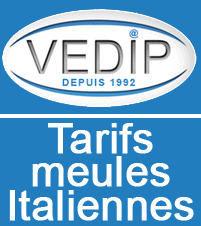Confirmed by science: France saves heating and cooling costs with the warm edge
New study can support window manufacturers when providing advice and
making sales
Kreuzlingen/Switzerland, November 2018. A scientific study now shows with concrete figures how much heating and cooling costs French home-owners and tenants can save with plastic spacer bars in the insulating glass in heat insulating windows. Three reference cities that represent the three different climates in France were chosen: Nancy for the cool-temperate climate, La Rochelle for the warm-temperate climate and Nice for the warm climate zone.
The new study of the independent Passive House Institute also calculates the savings of heating and cooling energy and CO2 emissions of entire buildings thanks to the small, efficient component. The results confirm the great benefits of high-quality plastic spacer bars compared with spacers made of aluminium. Window builders can use the study when advising customers and making sales.
According to the study, end customers can pay so much less in heating costs that a window with a warm edge is worthwhile, despite the slightly higher purchase price. For window builders and insulating glass manufacturers, this offers an economic opportunity, as high-quality plastic spacer bars are only slightly more expensive per linear metre to purchase than spacer bars made of aluminium.
The new study by the Passive House Institute was the first to investigate the influence of the spacer bars on the annual heating requirements of buildings: The study compares aluminium, stainless steel and plastic spacer bars in the windows of common houses that meet the requirements of the French energy standards in three different climate zones. The results: If high-quality plastic spacer bars are used instead of aluminium spacer bars, in the cool-temperate climate in Nancy, 5.9 percent of the total heating energy can be saved in a standard French house with double glazing. With a conventional house with ever more commonly used triple glazing, as much as 7.9 percent can be saved, and in a building following the Passive House standard, the savings are nearly 18 percent.
In the warm-temperate climate zone in La Rochelle, in the case of a typical country house with double glazing, the savings are 4.2 percent, with 5.7 percent savings in a house with triple glazing and in the passive house, over 13 percent can be saved.
In the warm climate of Nice, in addition to the 49.6 kWh/(m²a) annual heating requirement with aluminium spacer bars, there is also a useful cooling requirement – energy needed for cooling provided by the air conditioning unit in summer – of 33.3 kWh/(m²a) at 20 °C maximum internal temperature.
The energy savings are lower in comparison to the climates where only heating is required, with savings of up to 3.8 percent by using the plastic spacer bar instead of the aluminium spacer, but a maximum of just under 9 percent in the passive house.
Small component, big impact
In modern heat insulating windows, after the glass and frame, the spacer bar is the third important component in terms of the energy performance. The spacer bar is now really becoming the centre of attention. If the spacer bar has a poor – i.e. high – heat transmission coefficient, a lot of heat is lost to the outside – even with an excellent frame and high-tech glass. Even with the plastic spacer bars, there are big differences in the performance values: A highly efficient warm edge, as used in the study, has a linear thermal conductivity of 0.14 W/(mK). The value for stainless steel is 0.6 and for the aluminium spacer bar – the clear back marker – it is a massive 160 W/(mK).
The fact that aluminium spacer bars are still being used is down to the price above all. Some insulating glass manufacturers process several millions of linear metres every year. The cents per metre saved in the purchase price of aluminium spacer bars are therefore the argument used in the purchasing decision and the price war. The new study can give the manufacturers some important backup here, as it proves the cash benefits available to customers and consumers by using the higher-quality insulating glass with the warm edge.
“Essentially, the aluminium should be banned. The positive effect on living quality that the warm edge in the insulating glass has is so great that it has to become the conventional system", said Prof. Wolfgang Feist from the Passive House Institute at the SWISSPACER "fenestra-vision" symposium in Strasbourg. Because alongside the energy savings and aesthetics, spacer bars made from plastic also offer more living comfort: the temperatures on the inside of the windows remain pleasant even in the winter. In addition, the warm edge prevents the build-up of condensation at the edge of the glass, reducing the risk of mould there.
The study was commissioned by SWISSPACER, one of the producers of warm edge spacer bars. “With the scientific investigation by an independent research institute, we wanted resilient data for the market," stressed Andreas Geith, Managing Director of SWISSPACER.








